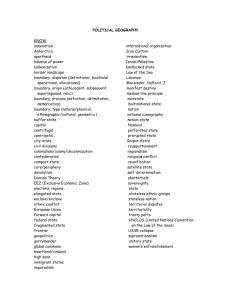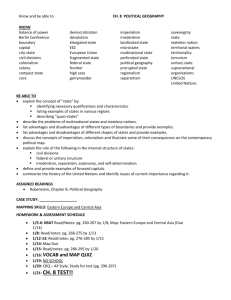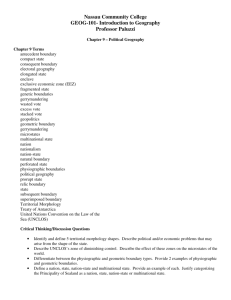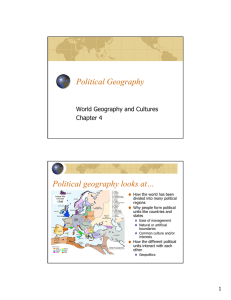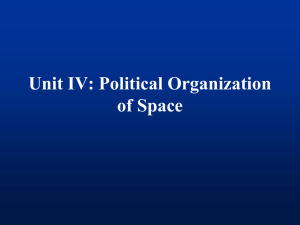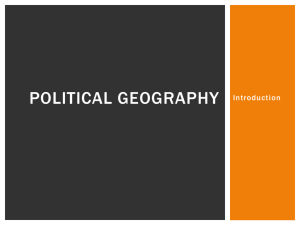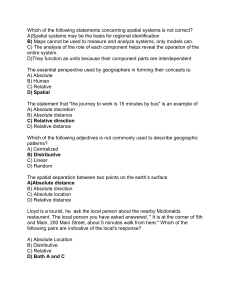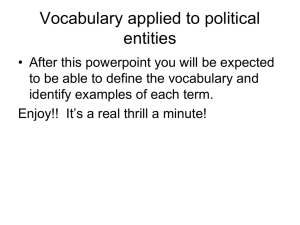political geography
advertisement
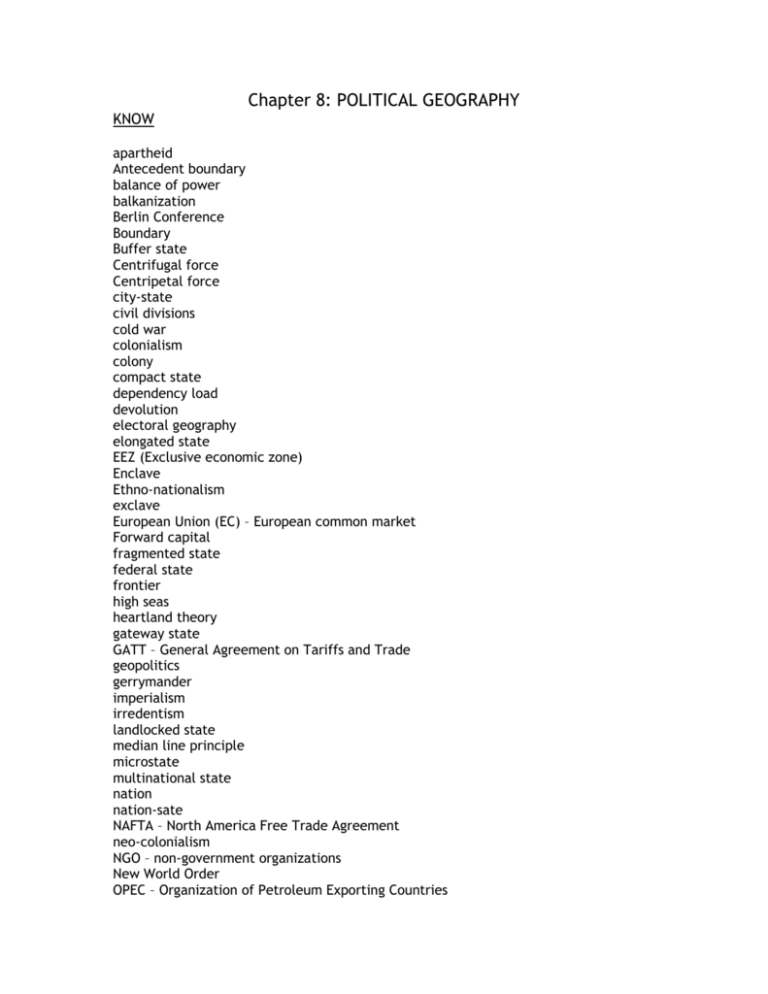
Chapter 8: POLITICAL GEOGRAPHY KNOW apartheid Antecedent boundary balance of power balkanization Berlin Conference Boundary Buffer state Centrifugal force Centripetal force city-state civil divisions cold war colonialism colony compact state dependency load devolution electoral geography elongated state EEZ (Exclusive economic zone) Enclave Ethno-nationalism exclave European Union (EC) – European common market Forward capital fragmented state federal state frontier high seas heartland theory gateway state GATT – General Agreement on Tariffs and Trade geopolitics gerrymander imperialism irredentism landlocked state median line principle microstate multinational state nation nation-sate NAFTA – North America Free Trade Agreement neo-colonialism NGO – non-government organizations New World Order OPEC – Organization of Petroleum Exporting Countries organic theory perforated state prorupted state relic boundary shatter belt sovereignty state stateless nation super imposed boundary territorial waters territorial morphology theocracy toponym township and range system transnational corporation Truman proclamation unitary state supranationalism United Nations BE ABLE TO • Explain the concept of “state” by identifying necessary qualifications and characteristics listing examples of states in various regions describing “quasi-states” • Describe the problems of multinational states and stateless nations. • List advantages and disadvantages of different types of boundaries and provide examples. • List advantages and disadvantages of different shapes of states and provide examples. • Discuss the concepts of imperialism, colonialism and illustrate some of their consequences on the contemporary political map. • Summarize the history of the United Nations and identify issues of current importance regarding it. READING 1. Rubenstein, Chapter 8: Political Geography 2. Kuby, Chapter 13: Breaking up is Hard to Do: Nations, States, and NaitonStates
